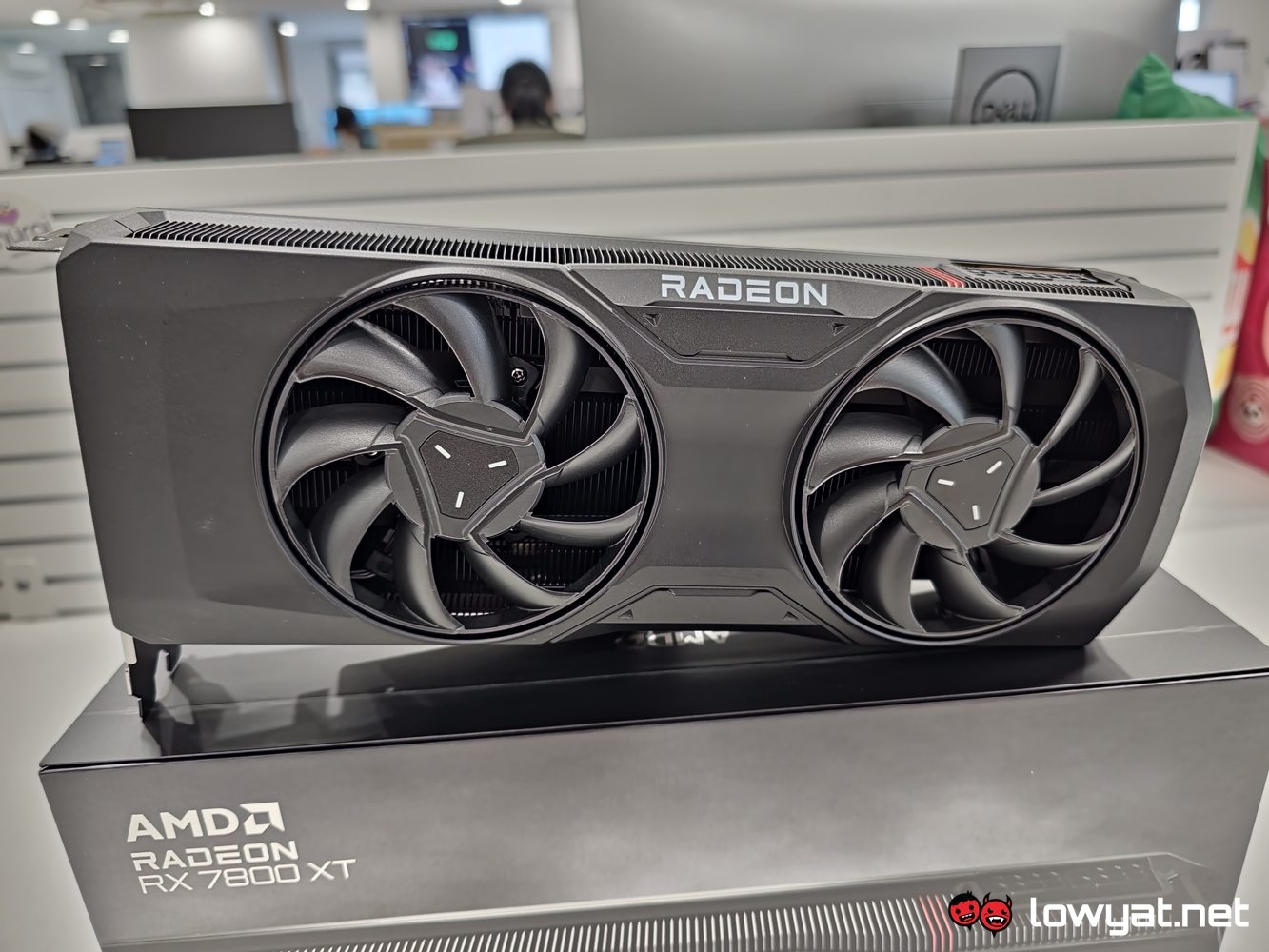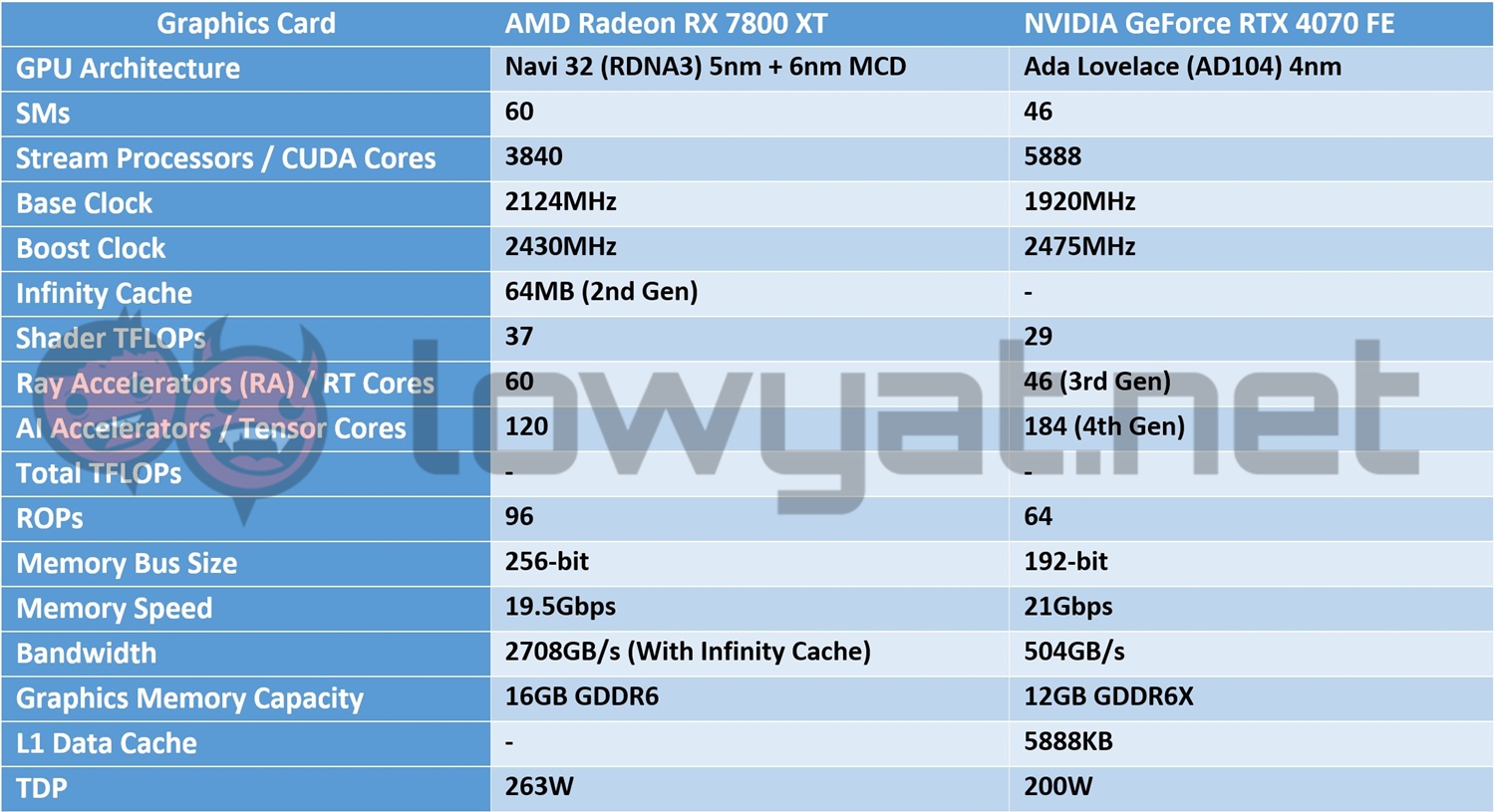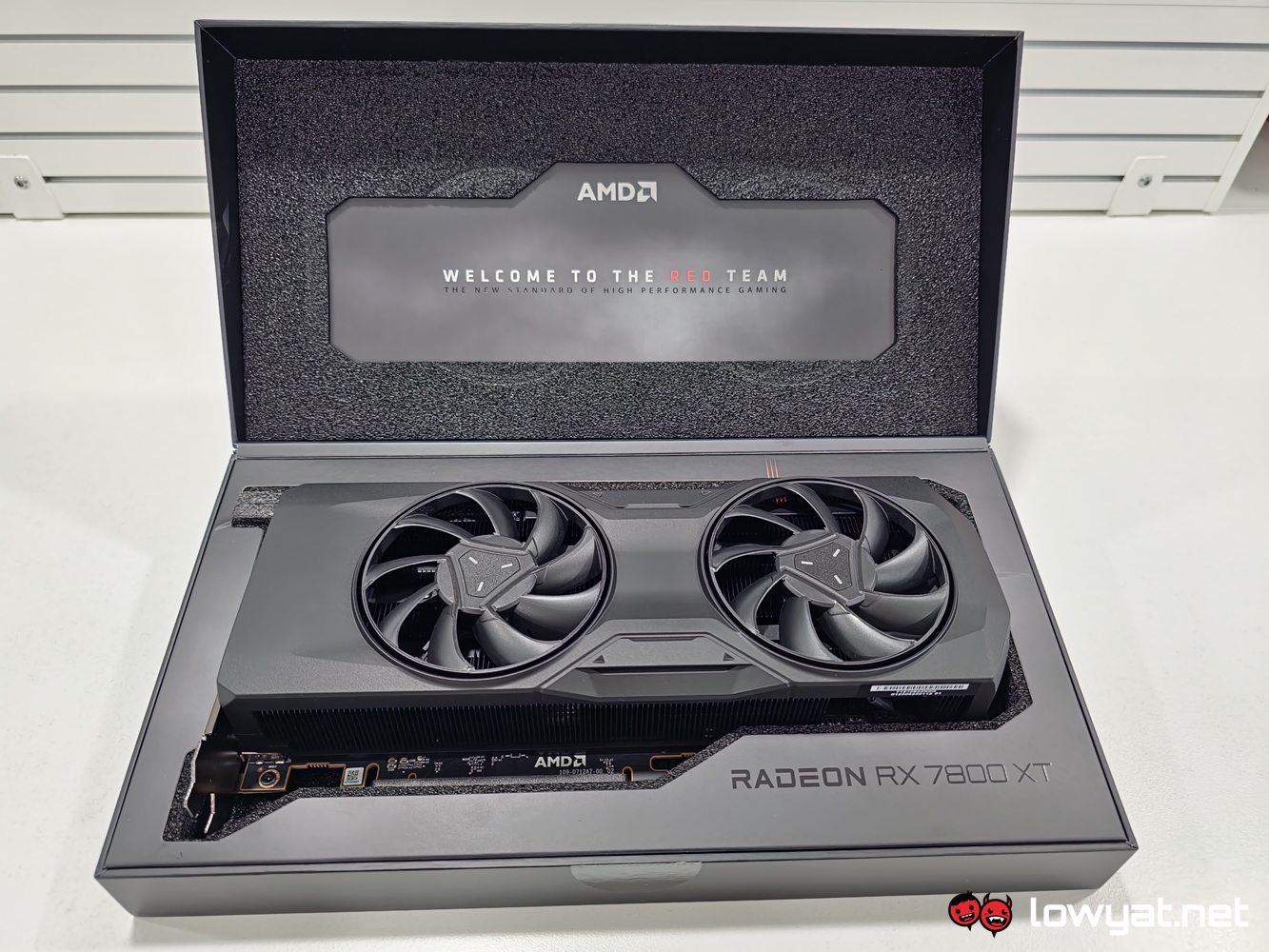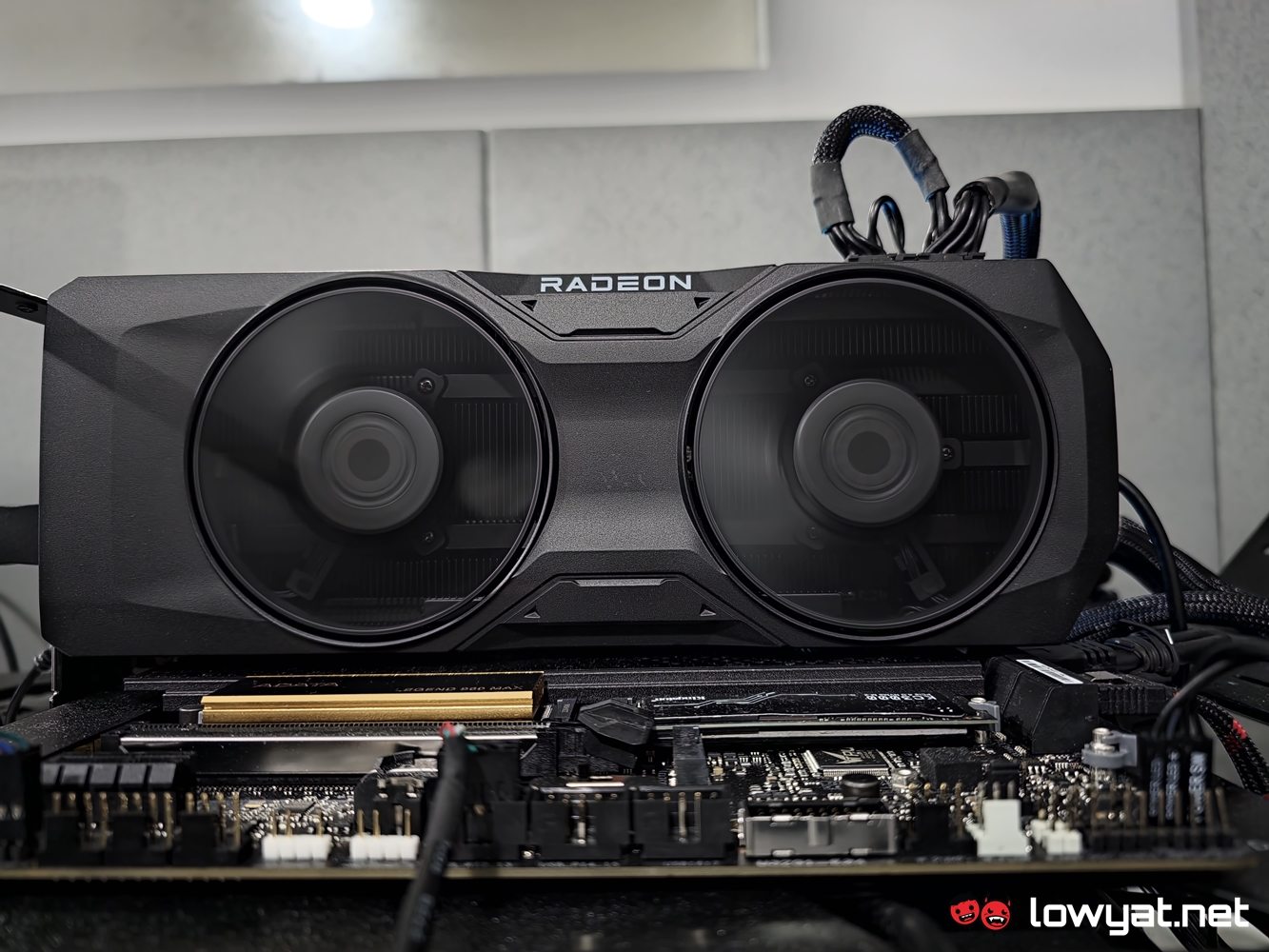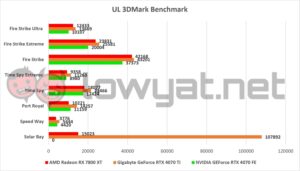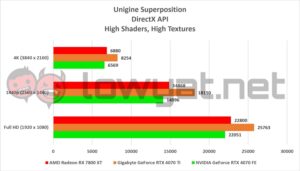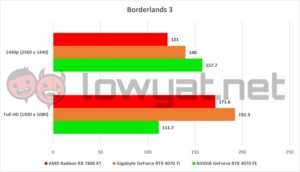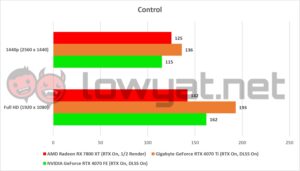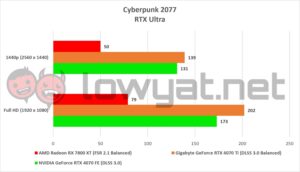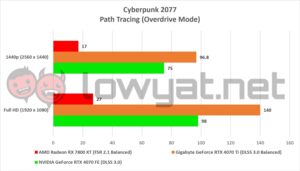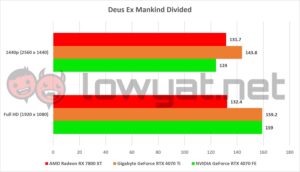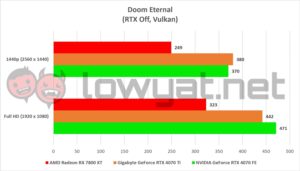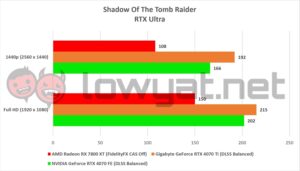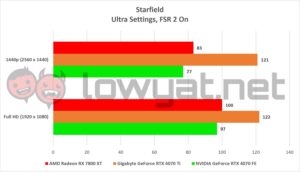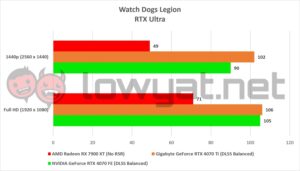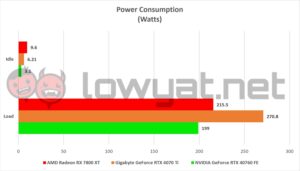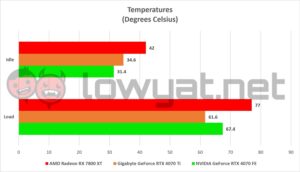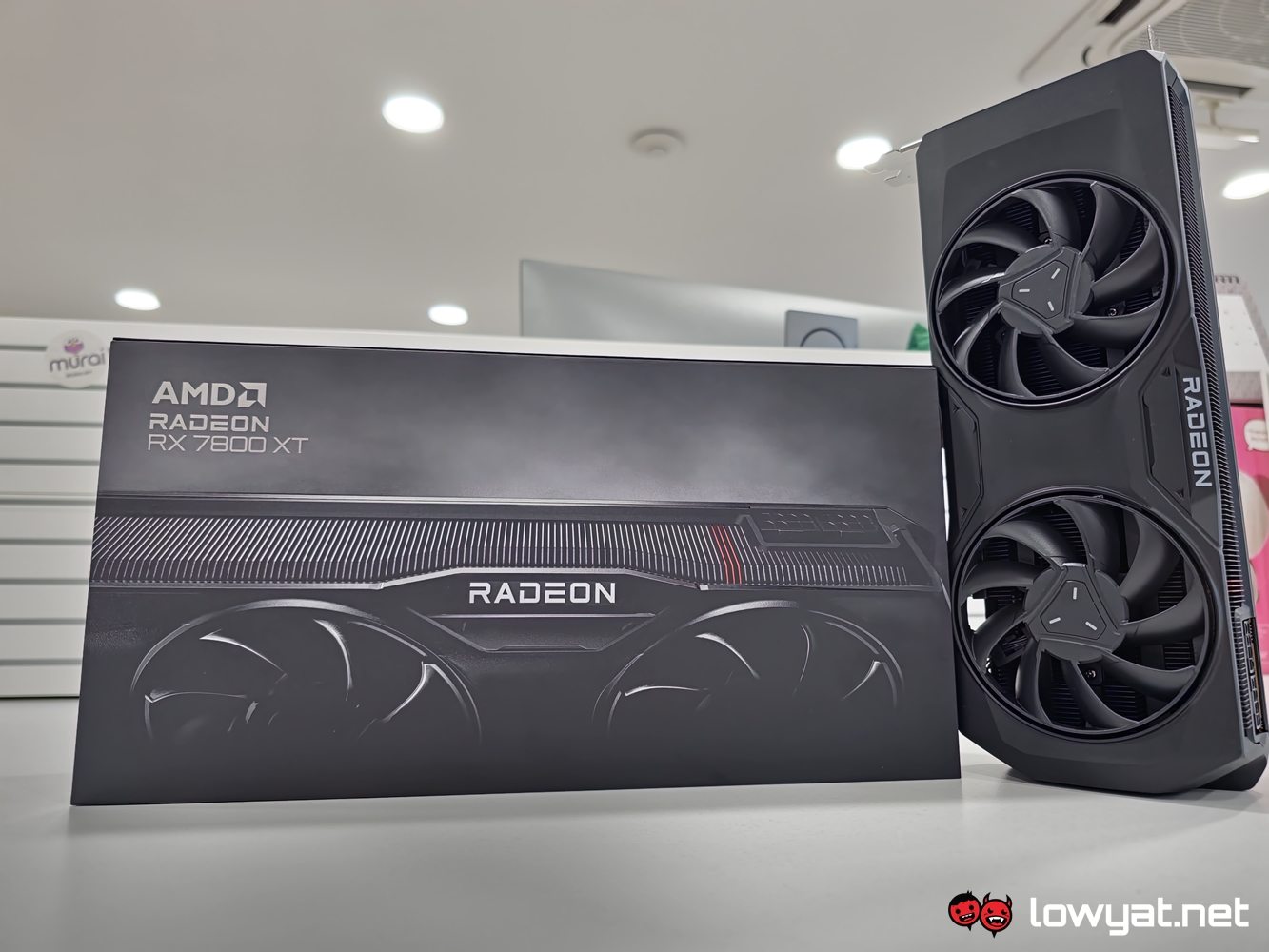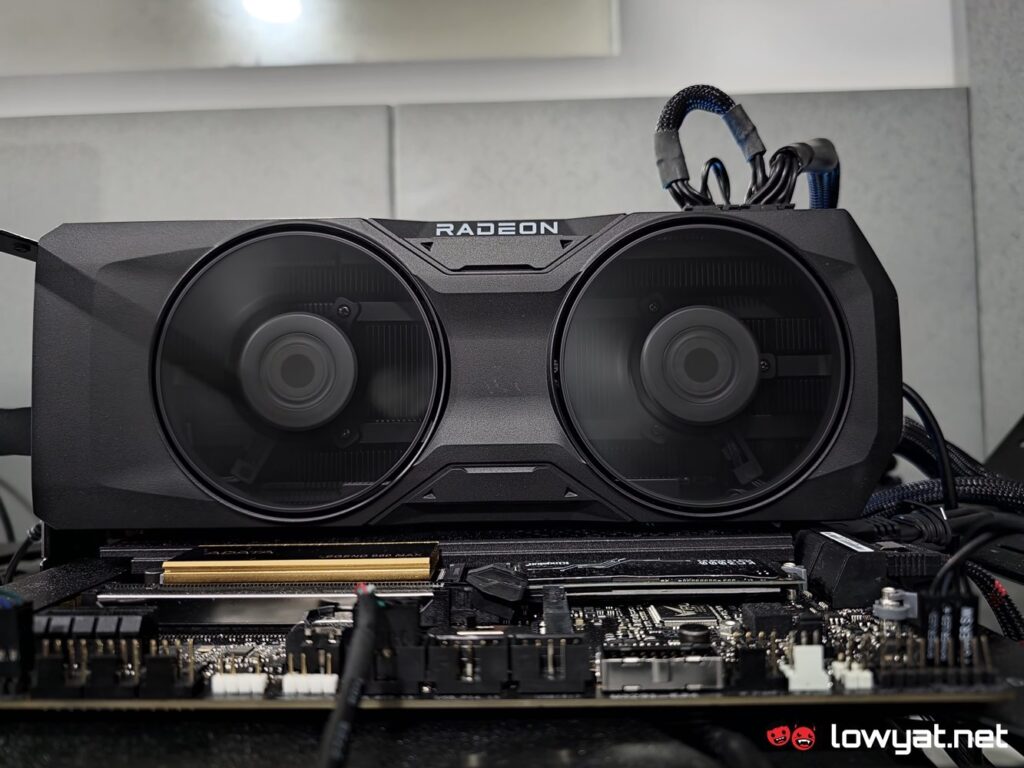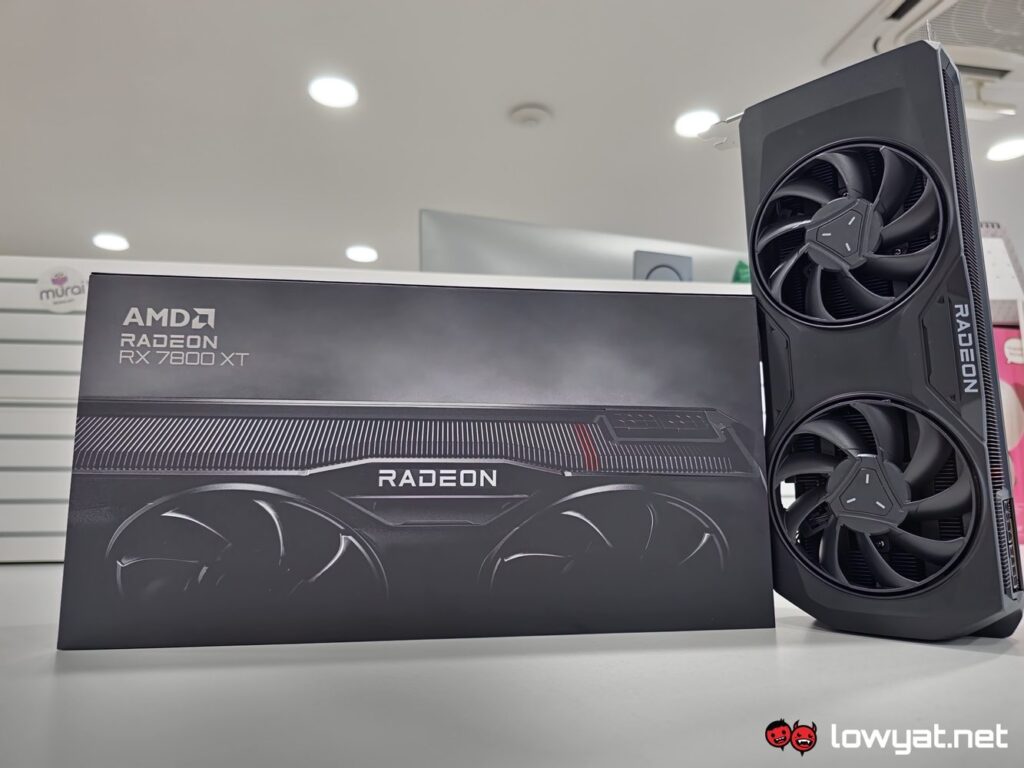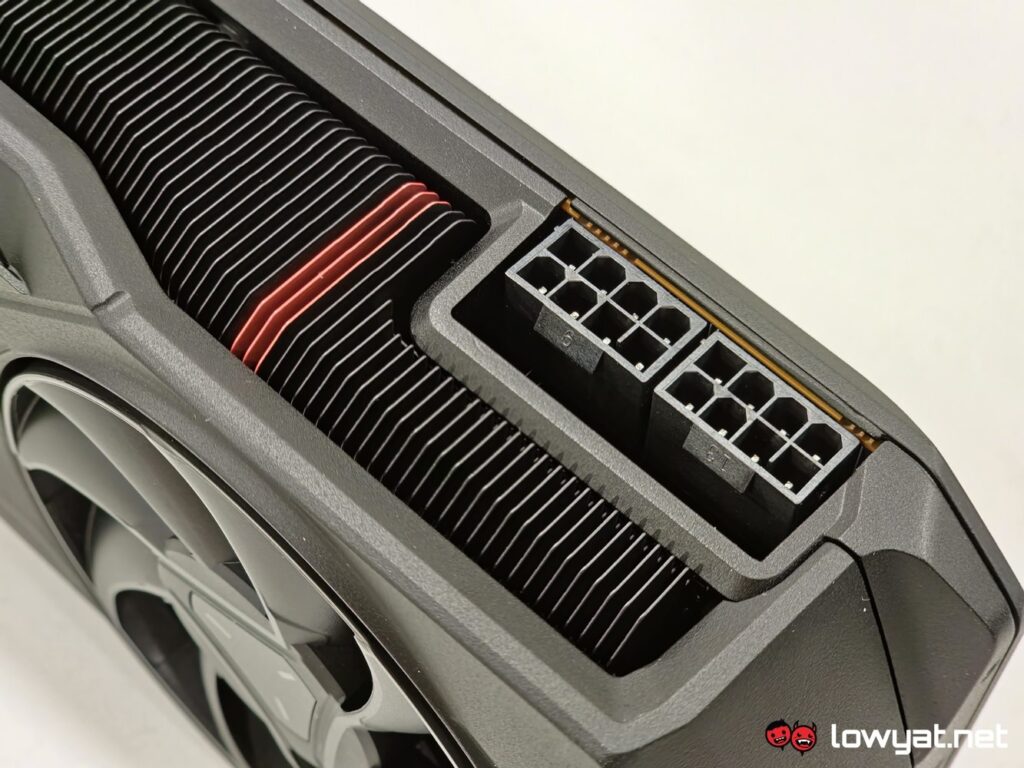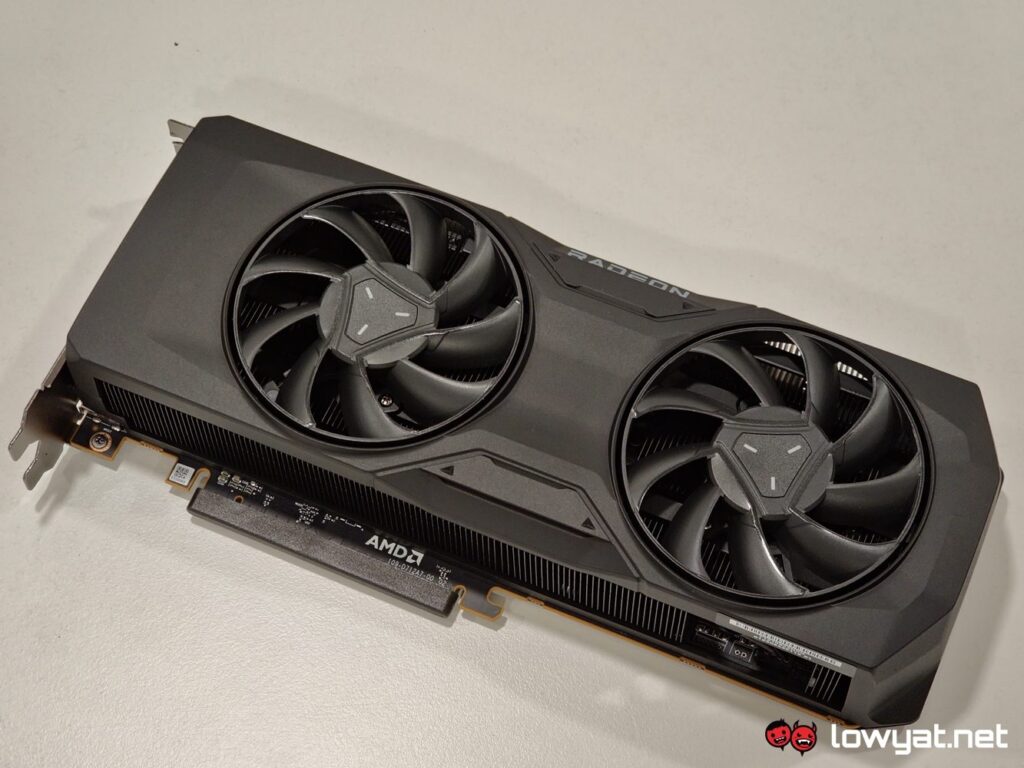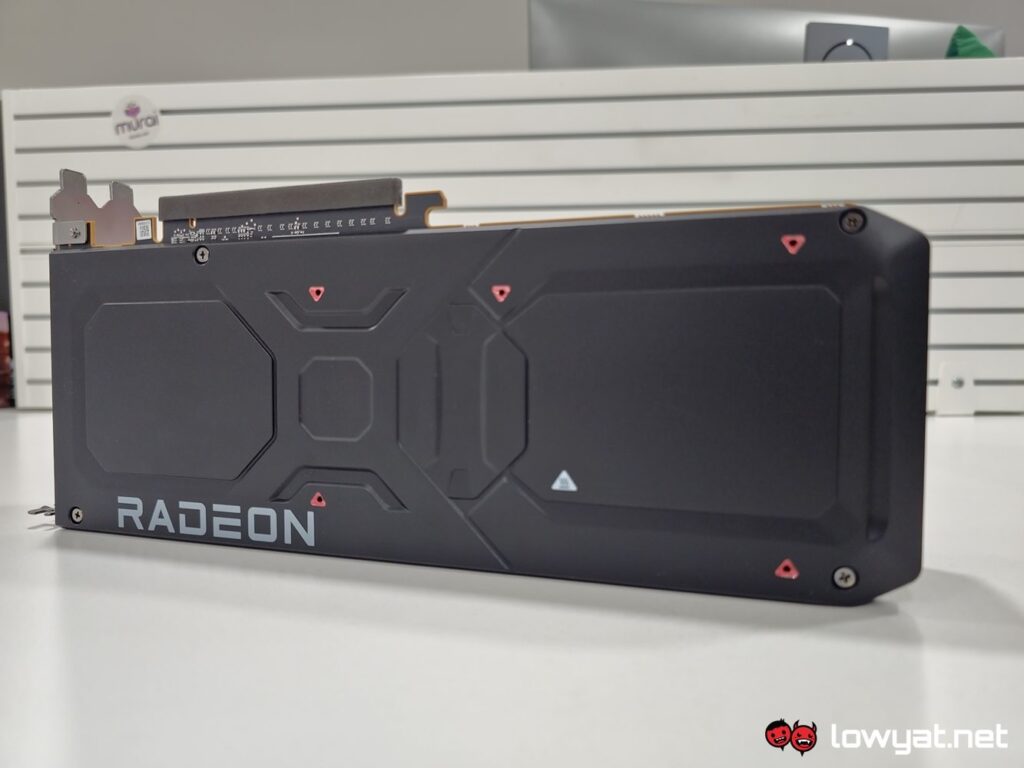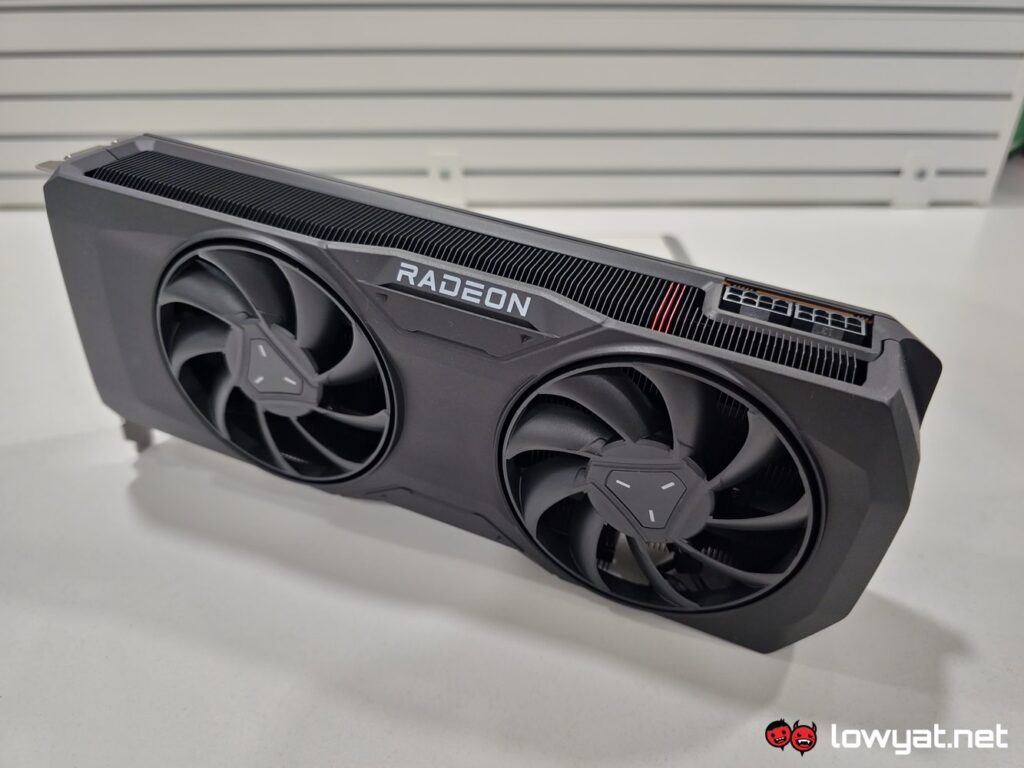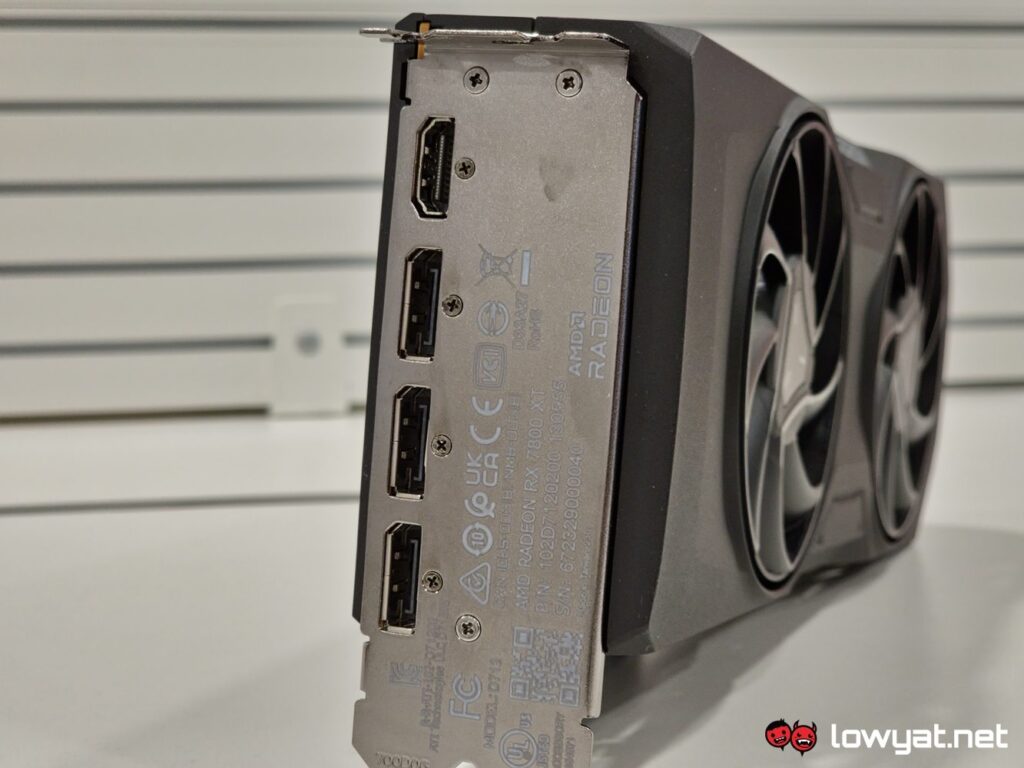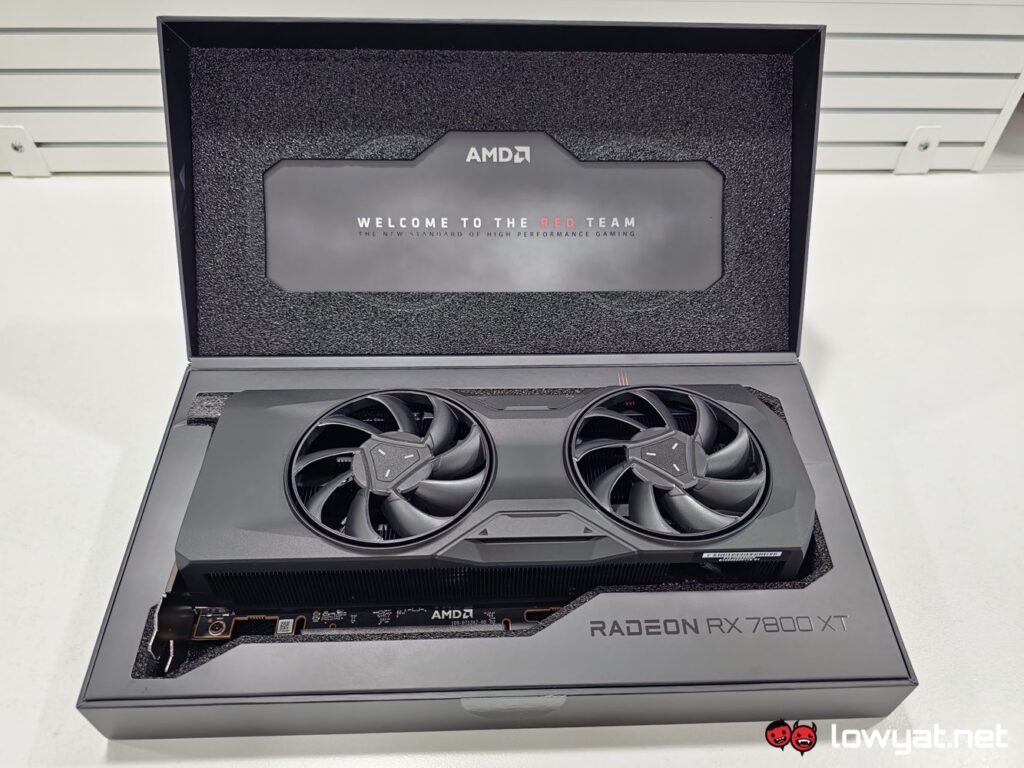At Gamescom 2023, which occurred during the last week of August, AMD unveiled two new GPUs, the Radeon RX 7800 XT and 7700 XT. The two cards serve as the brand’s answer for the mid-range gaming market segment – a gap it should have filled up first, before it released the RX 7600, in my honest opinion – with its sights set squarely at the Green Team’s own mid-range boxers, the RTX 4070 and 4060 Ti.
In this review, I will be looking at the performance of the 7800 XT and how much of a competitor it is against its alleged direct rival, the RTX 4070.
Specifications
The Looks Of It
Like all reference cards from GPU brands, the 7800 XT sports AMD’s all-black, industrial aesthetics. Despite only rocking a dual-fan configuration, it is still a sizable card and is still bigger than the RX 7600. That being said, it’s still not as monstrously huge as NVIDIA’s own GeForce RTX 4090 and 4080 graphics cards, and still manages to be within the 2.5-slot thickness.
Another difference between the 7800 XT and more powerful 7900 XT and 7900 XTX is the choice of outputs at the back of the card. Unlike its more powerful brethren, this card doesn’t come with a USB-C that supports DisplayPort 2.1. Instead, it just comes with the three DisplayPort 2.1 UHBR ports, and a single HDMI 2.1a port.
Oh, and forget about any RGB LEDs on this 7800 XT. There is literally nothing of the sort on this card. For power, AMD is still sticking to dual 8-pin PCIe power ports although if rumours are to be believed, this was a last minute decision as the chipmaker had initially planned on making this one of the first RDNA3 cards to run with the 12VHPWR connector that all NVIDIA’s GeForce RTX 40 Series cards uses, with the exception of the RTX 4060.
Beyond that, there is not much else about the design that I haven’t already covered with the previous reference Radeon 7000 Series graphics card in earlier reviews.
The Testbench
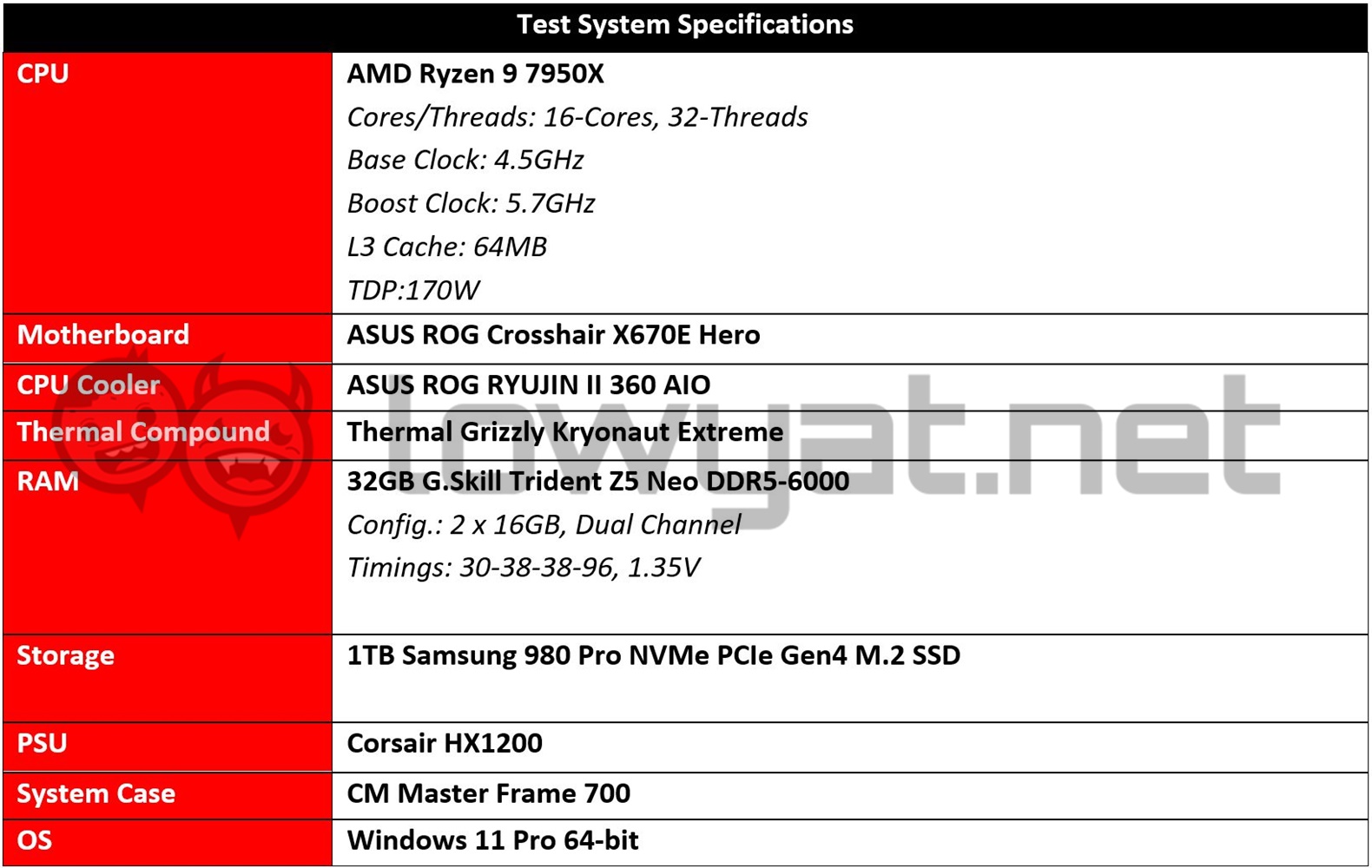 My Ryzen 9 7950X testbed remains unchanged and the components in the list are what I am using to bench the 7800 XT. In order to gauge its performance, I will be comparing against two NVIDIA GeForce RTX 40 Series cards: the RTX 4070 and RTX 4070 Ti. On another note, this will also be the first review that I will be adding in a new game title to the benchmark list: Starfield.
My Ryzen 9 7950X testbed remains unchanged and the components in the list are what I am using to bench the 7800 XT. In order to gauge its performance, I will be comparing against two NVIDIA GeForce RTX 40 Series cards: the RTX 4070 and RTX 4070 Ti. On another note, this will also be the first review that I will be adding in a new game title to the benchmark list: Starfield.
The game’s launch at the time of this review honestly gave me an excuse to add it to my list of benchmark titles, more for relevance and keeping said list up to date, if nothing else. Also, all benchmarks obtained is with the card out of the box, and no overclocking was made.
Benchmarks, Power Draw, And Temperature
You can actually see that, across the board, the 7800 XT is going toe-to-toe with the RTX 4070, and this is across the board. By the way, the Solar Bay test in the 3DMark benchmark shows an unresponsive RTX 4070; for reasons unknown to me at the time, the program wouldn’t play nice with the card, leaving unable to produce the number for that particular test.
That being said, it’s sort of obvious that the test is a little bias towards NVIDIA cards, given that the RTX 4070 Ti pulls way, way ahead of the red team’s mid-ranger, showing that it really has no chill, figuratively speaking.
Then there is the real-world, gaming portion of the tests. Again, the 7800 XT proves that it is more than capable of pulling its own weight, and then some. In non-ray-tracing titles, the average frame count in those games stay well far above the 60 fps mark and sits comfortably within the 100 fps bubble.
In titles where ray-tracing is an option, the results obviously begin to falter. It’s unavoidable at this point that Cyberpunk 2077 is being used, but at the time of writing, it is currently the only title that doesn’t really lean in favour of Radeon GPUs. At 1440p, the 7800 XT is only able to average 50 fps, and that’s with the RTX Ultra preset and FSR 2.1 turned on. Switch over to the game’s Path Tracing mode, and that average drops down to an unplayable 17 fps average, and 27 fps on Full HD.
That doesn’t mean that the 7800 XT is terrible with all games that tout ray-tracing. With Watch Dogs Legion, the card is still able to eke out 49 fps on average at 1440p, while at Full HD, it averaged 79 fps. In Shadow of the Tomb Raider, The card is able to hold an average of 100 fps at 1440p with ray-tracing on, but no upscaling. Then there is Starfield, where the GPU is clearly in its element, staying above the 60 fps threshold, with FSR2 turned on.
As for power consumption, the 7800 XT operates within its advertised TGP, so there is nothing out of the ordinary to report here. As for its operating temperature, the card runs a little hotter than the RTX 4070 or RTX 4070 Ti, but that is more or less to be expected from a Radeon GPU, more so one with AMD’s reference cooling solution.
Conclusion
At a starting price of US$499 (~RM2,322), the AMD Radeon RX 7800 XT is a compelling option for gamers, more so for adoring AMD fans. However, it is also a whole US$100 (~RM467) cheaper than the RTX 4070, and given the performance that I have gathered from my benchmarks, it is safe to say that AMD has more or less closed the gap between it and its green rival, and in just one generation.
The only drawback right to owning a Radeon GPU, let alone the 7800 XT, is the number of games that still lack support for FSR, but even that is steadily changing; like NVIDIA, AMD has been working hard with different video game developers to implement the titles, with some older titles expected to support the upscaling feature soon.
Putting aside the desire for ray-tracing and upscaling, my already-dated argument still applies here: if you’re just in a market for a card that is good enough for 1440p gaming, and you don’t necessarily care about all those cosmetic extras so long as the game looks pretty by default, then you can and should consider the 7800 XT.
Photography by John Law.
Follow us on Instagram, Facebook, Twitter or Telegram for more updates and breaking news.


